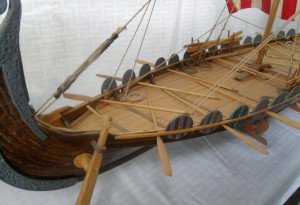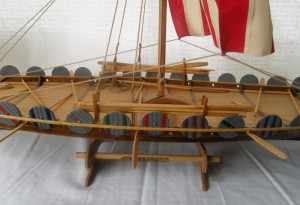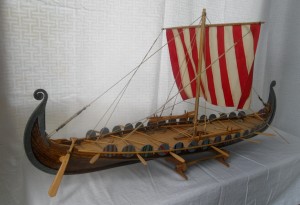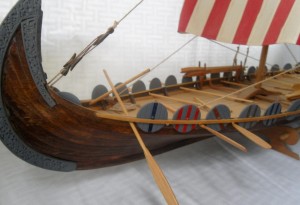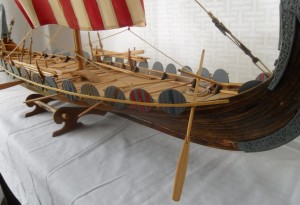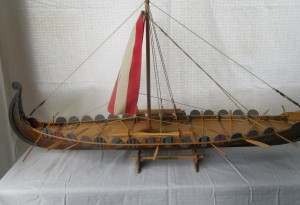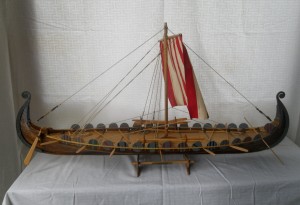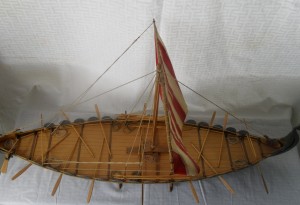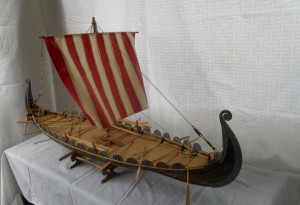Boat Name: Oseberg
Year Launched: Late 9th century
Country: Norway
Constructed By: Viking Ship
Size: It is 21.58 m long and 5.10 m broad, with a mast of approximately 9–10 m.
Actual Dimensions of Model: Length 35 inches Height 17 inches
Model Construction Hours: 106
Historical Significance:
“Osebergskibet” is one of the oldest well-preserved Viking ships discovered to date. It was found in a large burial mound at the Oseberg farm near Tønsberg in Vestfold county in 1903, resting on a “bed” of blue clay & covered with peat and stones. The ship is approximately 50-100 years older than other Viking ship finds. She lay low in in the water and was likely a rather perilous ship when traveling under sail.
The Oseberg burial mound (Norwegian: Oseberghaugen ved Slagen from the Old Norse word haugr meaning mound or barrow) contained numerous grave goods and two female human skeletons. The ship’s interment into its burial mound dates from 834 A.D, but parts of the ship date from around 800 A.D, and the ship itself is thought to be older. It was excavated by Norwegian archaeologist Haakon Shetelig and Swedish archaeologist Gabriel Gustafson in 1904-1905. This ship is widely celebrated and has been called one of the finest finds to have survived the Viking Age. The ship and some of its contents are displayed at the Viking Ship Museum, in Bygdøy.
The ship is a clinker built ‘karv’ ship built almost entirely of oak. It is 21.58 m long and 5.10 m broad, with a mast of approximately 9–10 m. With a sail of c. 90 m², the ship could achieve a speed up to 10 knots. The ship has 15 pairs of oar holes, which means that 30 people could row the ship. Other fittings include a broad steering oar, iron anchor, gangplank and a bailer. The bow and stern of the ship are elaborately decorated with complex woodcarvings in the characteristic “gripping beast” style, also known as the Oseberg style.
Although seaworthy, the ship is relatively frail, and it is thought to have been used only for coastal voyages. The boat has low freeboard, with the topsides slightly flaired. In section the shape is similar to a hard chine with a distinct change of angle at the waterline and slack bilges . There is very little round in the sections meaning the displacement is low for the length of the hull compared to the Gokstad ship which has more rounded sections. The unsuitability of the design for ocean travel has been shown by the sinking of the modern facsimile twice during moderate weather.
The main reasons appear to be the lack of freeboard, especially forward, where the hollow (concave) bow sections are very fine and lack the displacement necessary when the ship is driven down wind even by the limited sail area. After the first sinking the mast was moved further aft and the sail area reduced to stop the bow being driven under. This was insufficient to stop a second sinking.
